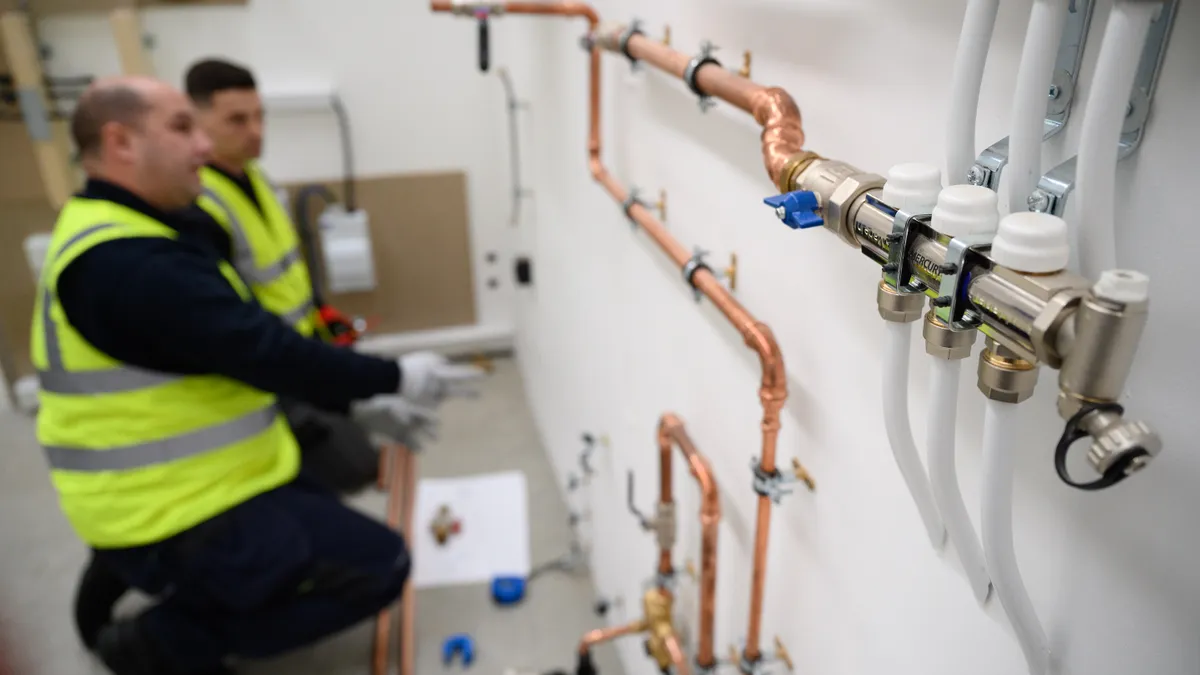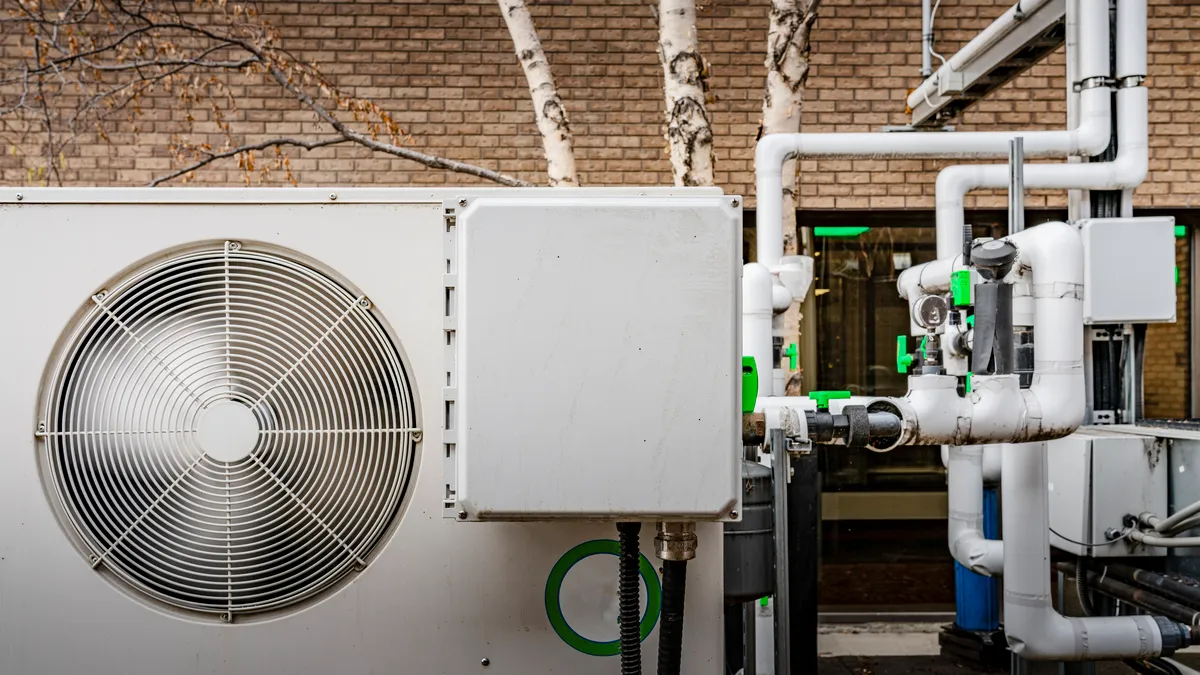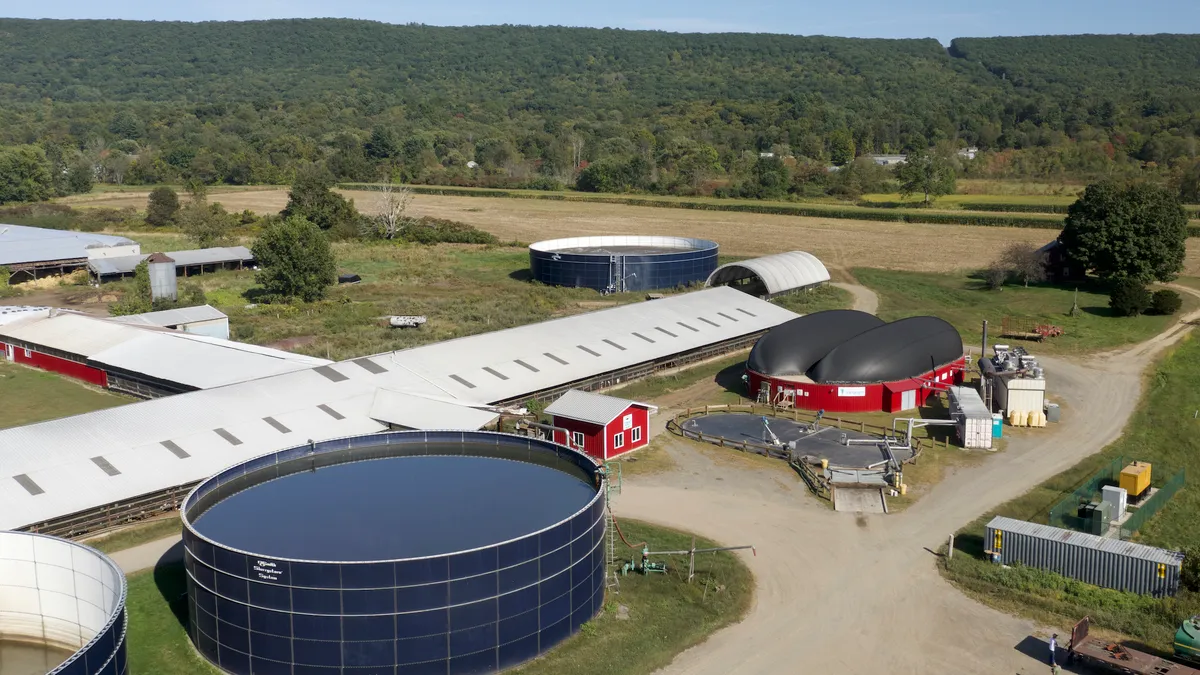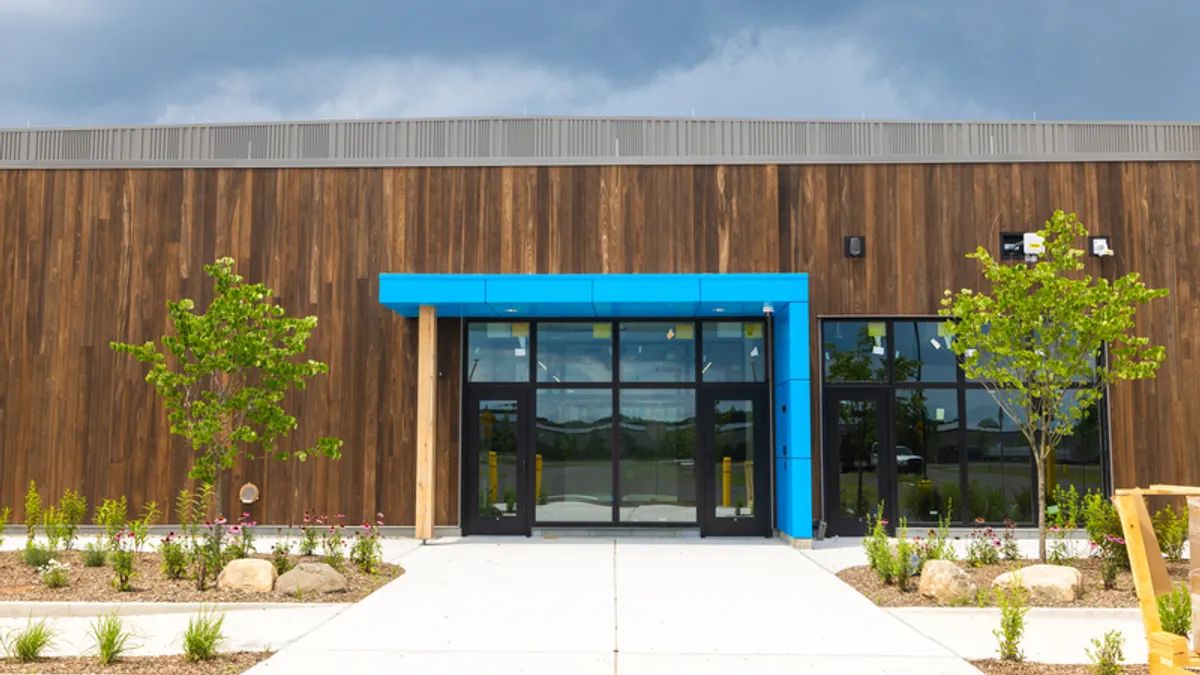The first phase of the Black Desert Resort near Zion National Park in Ivins, Utah, had a soft opening in October. This development phase of the 630-acre property features a resort hotel, spa, golf course, roughly 1,000 condos, and 190,000 square feet of commercial space, including shops and restaurants.
The sustainability-minded resort used Commercial Property Assessed Clean Energy, or C-PACE, financing for installing energy-efficient HVAC systems and insulation, earthquake mitigation and water conservation measures.
“We wanted to develop the property in an environmentally sustainable and sensitive way, one the community would be proud of,” said Jon Day, CFO at Reef Capital Partners, the commercial real estate investment company that owns the resort. "The irrigation system and water storage were constructed with water conservation as the top priority, which is especially important in a desert like Utah. We built the system with industry-leading technology and materials, and the C-PACE money helped us.”
Managing partner Patrick Manning named some of the resort’s other sustainable features: It uses low-voltage power over ethernet, “running only 10 volts to lights, security cameras and door locks across the entire property,” he said. “C-PACE helped us accomplish that [and] our water conservation measures. Because of C-PACE, we were able to finance efforts that banks wouldn’t,” Manning said, describing the experience as “seamless.”
Petros PACE Finance, which provided the project with $153 million in C-PACE financing, called the Black Desert Resort “the largest single transaction in C-PACE history” when the deal closed in October 2022. The resort secured a 30-year agreement at a 7% interest rate and a 25-year amortization period, Day said.
The mechanism “looks exactly like a tax assessment. There are no covenants [like] you’d find in normal mortgage loans. There’s no additional collateral."
)
Mansoor Ghori
Founder and CEO, Petros PACE Finance
C-PACE is gaining momentum as a way for commercial real estate owners and operators to fund sustainability upgrades, including retrofits and energy efficiency improvement projects. In the jurisdictions where it’s available, it’s an attractive option for facilities that are seeking long-term financing with lower monthly payments, said R-Zero CEO Jennifer Nuckles.
Features of C-PACE financing
With C-PACE, building owners and operators can typically get long-term, fixed-rate, non-recourse financing for up to 30 years for real estate projects that increase energy or water efficiency, including retrofits, upgrades and renewable energy installations. Interest rates may start as low as 7%, according to Peachtree Group, an investment firm that says it has facilitated 91 C-PACE transactions totalling $925 million.
The financing offers other advantages as well. The mechanism “looks exactly like a tax assessment. There are no covenants [like] you’d find in normal mortgage loans. There’s no additional collateral,” said Mansoor Ghori, founder and CEO of Petros PACE Finance, which has funded C-PACE transactions in 17 states and Washington, D.C., according to its website. The maximum amount of C-PACE money a project can typically secure equals about 30% of the value of that building, Ghori said.
Also notable is that repayment is attached to the building where energy efficiency improvements are being made, not to the property owner, according to a report from Patrick Dolan and Anna Lee, partners at Norton Rose Fulbright, which represented Petros in New York City’s first C-PACE financing transaction. That transaction, worth $89 million, was for energy efficiency improvements at a Wall Street-area building and was secured in 2021.
C-PACE financing “has gone from a niche product to a fairly mainstream financing tool. You're now reaching an institutional client base that didn't exist before, and a lot of it is due to expansion of legislation and educational resources,” said Rafi Golberstein, CEO of Minneapolis-based PACE Loan Group, which provides C-PACE financing across the U.S.
State progress and barriers
A state or local government must enable C-PACE financing via legislation and then launch a program to make it available in that jurisdiction. Washington, D.C., and 40 states have PACE-enabling legislation, and D.C. and more than 30 states have active C-PACE programs, according to the PACENation website.
North Carolina is among the most recent states to approve C-PACE legislation, which it did in July, on the heels of Georgia and Idaho’s enactments earlier last year.
Minnesota signed a bill into law in May extending the maximum term for C-PACE financing from 20 years to 30 years and raising the loan-to-value ratio from 20% to 30%. The revision also broadened the scope of PACE-eligible projects to include building resiliency improvements and water conservation. The state’s program now finances energy projects that include fuel-switching, and it no longer requires eligible energy projects to lower net energy consumption provided greenhouse gas emissions are reduced, Golberstein said.
The law also removed requirements that projects be cost-effective, Golberstein said. During a Minnesota House Climate and Energy Finance and Policy Committee meeting in March, Golberstein testified that the requirement had hindered electrification and decarbonization projects in the state.
"C-PACE can provide an important boost for a hard-to-finance project or a borrower who is in a less solid equity position — but established developers who come to the table with a strong balance sheet may not see the same benefits."

Chris Nevin
Mid-Atlantic Regional Manager, Institutional Real Estate, First National Bank
Maryland requires an amortization schedule of no more than 20 years, which makes the mechanism less financially attractive in the state, according to Chris Nevin, mid-Atlantic regional manager of institutional real estate at First National Bank.
When considering C-PACE financing for a particular project, “It has to make good financial sense. C-PACE can provide an important boost for a hard-to-finance project or a borrower who is in a less solid equity position — but established developers who come to the table with a strong balance sheet may not see the same benefits,” Nevin said. “In fact, there could be situations where it ends up adding costs in the long run.”
While states like Minnesota have made strides in expanding C-PACE, New York City has faced a more challenging path. The city established its C-PACE program under the Climate Mobilization Act in 2019, but the program has seen only three deals come to fruition since 2021, according to PACE Loan Group.
One hurdle had been the requirement that all projects achieve a savings-to-investment ratio, or SIR, of 1.0 or greater. That meant “the projected energy savings had to equal or exceed the investment cost” and “projects had to demonstrate a dollar of savings for every dollar of PACE money they sought,” said Laura Rapaport, founder and CEO of North Bridge, which provides C-PACE financing to institutional commercial real estate developers across the U.S.
In August, however, the New York State Energy Research and Development Authority updated its state guidelines to eliminate the SIR requirement for certain projects, including new construction and major renovations that qualify for C-PACE, retrofits that will completely electrify a building and those that install HVAC, ventilation or water heating systems that meet certain efficiency standards. Those changes apply across New York state; the NYC Accelerator PACE Financing Program updated its guidelines in August to reflect these changes for New York City projects.
“The SIR requirement previously limited C-PACE adoption, as many projects struggled to demonstrate immediate cost parity,” Rapaport said. “We expect to see rapid expansion of C-PACE adoption in [New York City] with the elimination of the SIR barrier and the inclusion of new construction and major renovation projects.”
C-PACE and multi-state projects
Despite the appeal of C-PACE financing, the state-by-state nature of C-PACE programs can give pause to building owners and developers managing portfolios across multiple states. “Every state has its own tax law,” Golberstein said. A company wanting to use it to retrofit properties in multiple states would need to secure financing in each state.
“When we think about larger [real estate investment trusts] or regional property owners with portfolios in three or four states or markets, it’s about doing a small deal and giving it a run. And, if that works, you [replicate] it across the portfolio, where applicable,” Golberstein said.
Nuckles recommends that property owners with large portfolios conduct a portfolio-wide audit to identify properties that have the potential for the highest cost savings. “I'd tailor each C-PACE transaction to the specific needs of the properties within the portfolio. Improvements can also always be implemented in phases,” she said. “It behooves the hotelier who owns four properties, as they can approach it from a portfolio perspective and then go down to the individual property level. Owners and operators can be in a scenario where benefits outpace outlays in a particular year.”
Golberstein emphasized the similarities of the state programs. “So, if you’ve done PACE in Tennessee, it’ll be oddly similar to doing PACE in Nebraska. There’ll be some slight nuances, but [at a] high level, it’s going to be the same process. So, the real question is whether you’re in a PACE-eligible state,” he said.
Jaime Del Álamo, head of ESG value & risk Americas at JLL, sees more differences, however.
“C-PACE works at a more regional level, and conditions vary widely by state, with differing rules, provider availability and even qualification,” said Del Álamo, who is currently involved in a couple of C-PACE financing deals. “It’s an excellent financing alternative on an individual basis, but I don’t think it’s mature enough today to be able to advise one single owner in a national scheme and say, ‘OK, we can use C-PACE to finance X amount of properties distributed throughout the country,’ because there’s a lot of nuances today per market and even in [how] the market is performing.”
Nuckles noted the long-term benefits that can come from C-PACE program-financed improvements, including lower maintenance and operational costs and reduced energy consumption.
C-PACE is “adaptive and cost effective,” Nuckles said. “It’s a symbol of the evolution of the real estate industry, [which] is moving much more toward a sustainable future.”


















